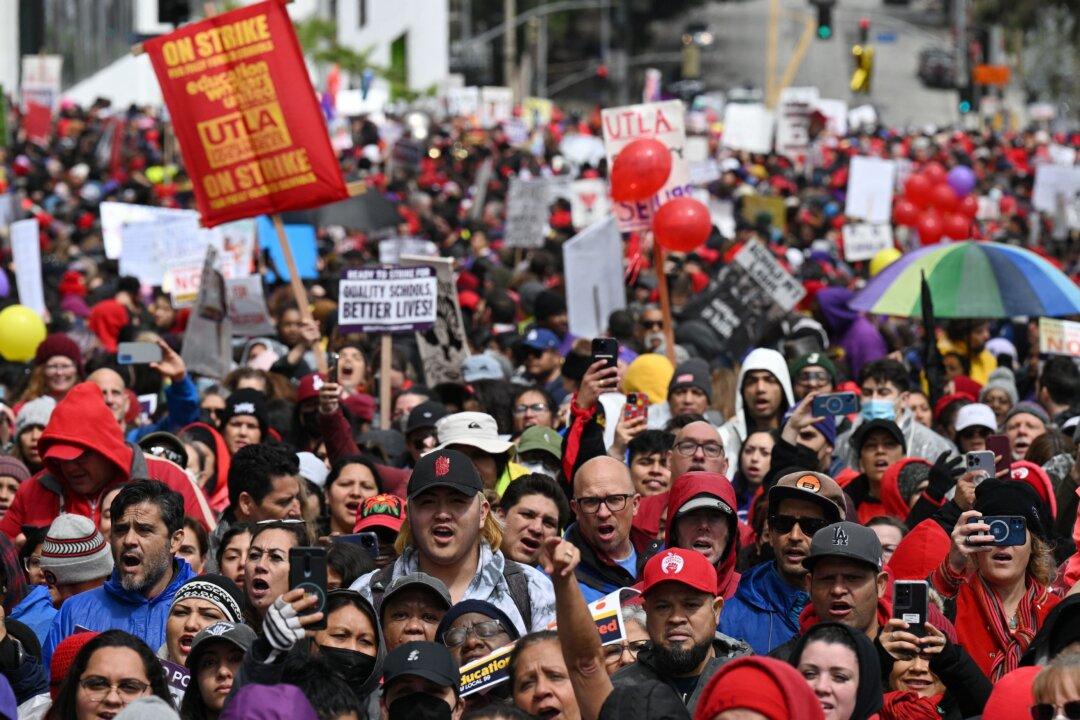Commentary
The Los Angeles Unified School District shuttered school doors March 21 after a strike by Local 99 members of the Service Employees International Union, which represents non-teaching employees. The United Teachers of Los Angeles, which represents teachers, joined the strike. The district’s 420,000 students are at home for the expected three-day duration of the strike. Well, at least they’re avoiding the heavy rains.





